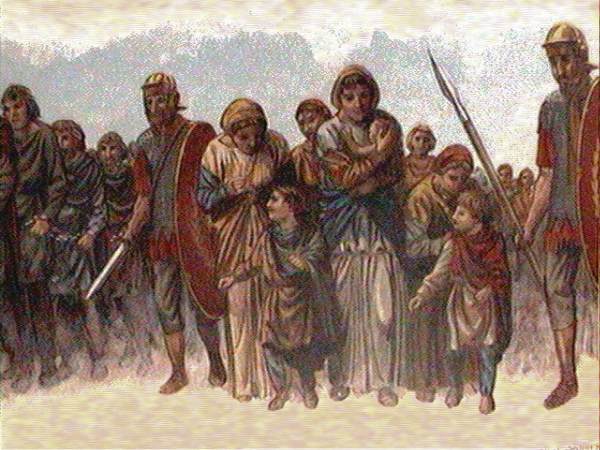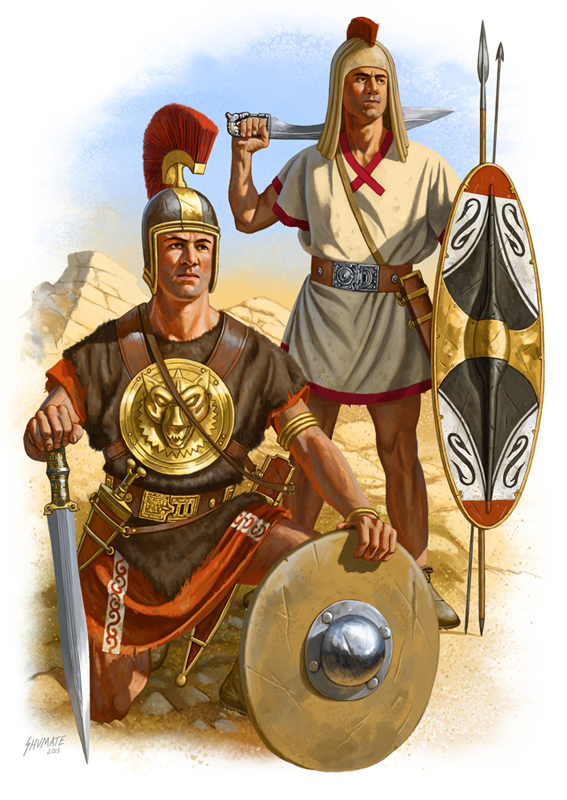Thread - Muttines the Libyphoenician officer or how the incompetency of the Carthaginian army during the 2nd Punic War led to the loss of one of its most valuable officers 

Before we begin, let's establish who the Libyphoenicians were during Muttines' time : they were the Libyans who embraced punic customs and enjoyed equal civil rights as the citizens of Carthage. Archaeology also unveils a nuanced reality, showcasing a blended cultural landscape.








Muttines (punic : MTN,« Mattan » : « Gift (of the Deity) ») was a Carthaginian officer from the Libyphoenician elite of Hippo Akra/Diarrhytus (present-day Bizerte). He grew up in the Barcid family's midst, and eventually became a prominent member of their high command. 

His personal merit later allowed him to acquire a command in Sicily, leading troops of Numidian cavalry (2000 to 3000 men). In fact, he was sent to Sicily under Hannibal's orders after the fall of Syracuse in 212, replacing Hippocrates who lost his life during the conflict.




From 212 to 210 BC, He carved a path of triumph in Sicily,earning immense popularity among his men and allies. He waged a campaign of scorched earth against Rome's allies and achieved victories over both them and the Roman forces themselves, notably during the siege of Agrigentum 

These victories encouraged generals Epicydes and Hanno to camp near Himera in the winter of 212, hoping to engage Marcellus' troops. Marcellus, in turn, decided to station his forces on the opposite bank to observe the movements of the rival troops. 

Without wasting any time, Muttines swiftly crossed the river and launched a fearless assault on the enemy's outposts, causing profound terror and chaos. The ensuing day witnessed a near-regular battle, as he forced the Romans back within their defensive lines. 

Later, he had to depart to handle a mutiny in Heraclea Minoa. However acting against Muttines' counsel, and with the intention of preventing him from gaining too much glory, the two generals then decide to cross the river and confront the forces of M. Claudius Marcellus. 

This led to a total disaster, with thousands of men killed or captured (survivors sought refuge in Agrigentum). Muttines rising fame sparks intense hatred and jealousy among the generals, especially Hanno, who, as per Livy, even go so far as to call him a "degenerate African" 

Hanno removed him from command and handed it over to his own son. Confronted with this injustice, Muttines allied with Rome in 210, following the surrender of Agrigentum to the Roman forces after negotiations with the general Valerius Laevinus. 

This defection had disastrous consequences for Carthage: the loss of its last Sicilian stronghold, the generals' retreat to Africa, the grim fate of Agrigentum's people (enslavement and execution of magistrates), and the defection of 40 other cities. 

His unquestionable influence over his men is evident in how he pacified the mutiny of the 300 Numidians in Heraclea Minoa. Even in his absence, his troops remained neutral while Hanno initiated the conflict, but they unequivocally followed him when he joined the ranks of Rome. 

From then on, he displayed unwavering loyalty to the Romans, who, in turn, honored him. At the initiative of a plebeian tribune, he was granted Roman citizenship in 209, becoming "Marcus Valerius Muttines." Additonally, he received a property in Rome. 

In 191, he fought under Scipio's command at Thermopylae against Antiochus III the Great. Then, in 188 BC, when the Roman army returned after the expedition against Antiochus, Muttines' troops were entrusted as the vanguard in Thrace.




There around 15k Thracians encountered Muttines and his troops. With 400 Numidian horsemen and a few elephants, Muttines' son and 150 numidians pierced through the enemy's center. Muttines positioned the elephants in the center and the cavalry on the flanks, engaging the enemy. 

His son's surprise attack from the rear caused panic among the enemy, leading to their confusion and disarray. The action was so devastating that it prevented the Thracians from being able to engage the Roman troops. 

Due to his remarkable reputation, he was bestowed with official honors in Greece, particularly in Delphi. During the summer of 190, both he and his four sons were granted proxeny, entitling them to civil and sanctuary privileges. 

• • •
Missing some Tweet in this thread? You can try to
force a refresh

 Read on Twitter
Read on Twitter

















